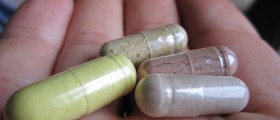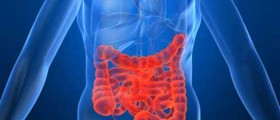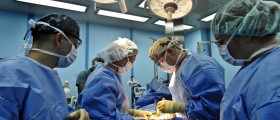
Digestive System Function
Digestive system breaks down the food we eat and turns it into energy that is vital for survival. Digestive system is made up of the digestive tract and it performs vital functions in the body. Functions of the digestive system include ingestion, digestion, absorption and defecation.
The digestive system consists of long twisting tube that begins at the mouth and ends at the anus, and it is known as digestive tract or gastrointestinal tract. Other organs of the digestive tract include pharynx, esophagus, stomach, small intestine, large intestine or colon. Parts of the digestive system are also teeth, tongue, salivary glands, liver, gallbladder and pancreas.
Mouth
Mouth is the beginning of the digestive system. When food enters the mouth, it is broken into pieces with the help of teeth. Saliva, produced by the salivary glands, mixes with food and breaks it down with the help of ptyalin, an enzyme contained in saliva. The tongue helps this softened food known as bolus to move into the pharynx.
Pharynx
The pharynx or the throat is a 5 inch long tube that begins at the back of the nose. Pharynx receives the softened food or bolus from the mouth and allows it to enter esophagus while at the same time prevents it to get into the windpipe.
Esophagus
The esophagus is a 10 inch long passage that travels through the neck and thorax, behind the trachea and opens into the upper end of the stomach. The esophagus receives the food from pharynx and pushes it into the stomach with the help of lower esophageal sphincter by means of muscular contractions called peristalsis.
Stomach
The stomach is a hollow organ that acts as a reservoir for food for 2 to 5 hours. The stomach function is to continue the process of breaking down food using a digestive juice known as gastric juice. Gastric juice contains hydrochloric acid and pepsin enzymes and it digests proteins while it doesn’t digest starch, fats and sugars. Partly digested food known as chyme is then released to the small intestine.
Small Intestine
The small intestine consists of three segments: the duodenum, jejunum and ileum and it is 20 feet long. The duodenum continues the process of breaking down foods while jujenum and ileum absorb the nutrients. Enzymes released by the pancreas and bile produced by the liver support digestion of the food.
Large Intestine
The large intestine is a 5 feet long muscular tube that connects the small intestine to the rectum. It is divided into cecum, appendix, colon and rectum. Function of the large intestine is to absorb water and mineral salts from the digested food. The rectum receives indigestible food and it expels it through the anus.
Anus
The anus or anal opening is last part of the digestive tract. It is a 2 inch long canal that consists of pelvic floor muscle and two sphincters. Function of the anal opening is to eliminate the stool from the body.

















Your thoughts on this
Loading...